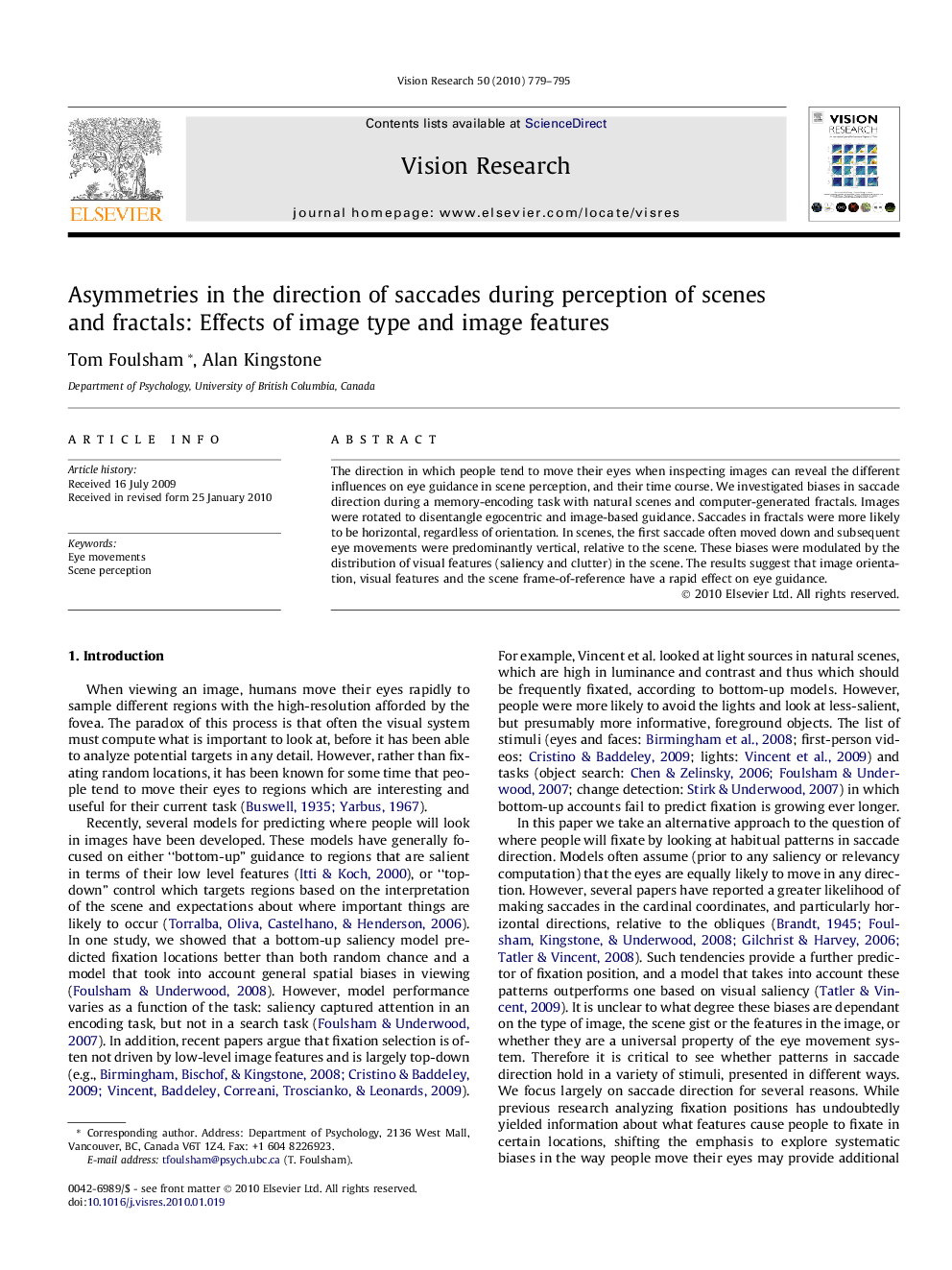| Article ID | Journal | Published Year | Pages | File Type |
|---|---|---|---|---|
| 6203847 | Vision Research | 2010 | 17 Pages |
The direction in which people tend to move their eyes when inspecting images can reveal the different influences on eye guidance in scene perception, and their time course. We investigated biases in saccade direction during a memory-encoding task with natural scenes and computer-generated fractals. Images were rotated to disentangle egocentric and image-based guidance. Saccades in fractals were more likely to be horizontal, regardless of orientation. In scenes, the first saccade often moved down and subsequent eye movements were predominantly vertical, relative to the scene. These biases were modulated by the distribution of visual features (saliency and clutter) in the scene. The results suggest that image orientation, visual features and the scene frame-of-reference have a rapid effect on eye guidance.
